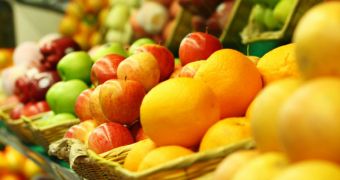A chemistry professor at the Cambridge-based Massachusetts Institute of Technology (MIT) and his team have recently completed work on a new type of sensors, which can be used by grocers and supermarket managers to keep a closer eye on the state of produce they are selling.
The sensor the group created works by detecting ethylene, a gas that is known for its role in promoting the ripening of fruits and vegetables. The instrument is so sensitive that it can detect even trace amounts of the chemical, its creators say.
According to official statistics released by the US Department of Agriculture, more than 10 percent of all produce sold in the country every single year go to waste because of spoilage. MIT expert Timothy Swager believes that the new sensor could significantly reduce this waste.
Details of how the detector was put together were published in a recent issue of the esteemed international journal Angewandte Chemie. Given the low cost required to build the new ethylene sensor, Swager proposes that each box used to transport produce should have such an instrument attached.
An interesting aspect is that the boxes themselves will not even have to be opened during transport. A handheld scanner could be used to collect readings of what's inside, revealing just how ripped the contents are. This would streamline transport, and help reduce fuel usage as well.
If this system is implemented, grocers and supermarket managers would find it easier to determine which products to put on the shelf earlier, and which can be held in storage for a little while longer.
“If we can create equipment that will help grocery stores manage things more precisely, and maybe lower their losses by 30 percent, that would be huge,” explains Swager, who holds an appointment as the MIT John D. MacArthur professor of chemistry.
“Food is something that is really important to create sensors around, and we’re going after food in a broad sense,” he believes. At this point, ethylene-monitoring devices are only installed in large warehouses, but the systems are expensive to purchase and maintain.
Sensors with applications in biological sciences are new to the expert, who specializes in manufacturing instruments capable of detecting explosives or chemical and biological warfare agents. The newly-developed sensor could cost as little as $1, plus the cost of the handheld scanner.

 14 DAY TRIAL //
14 DAY TRIAL //